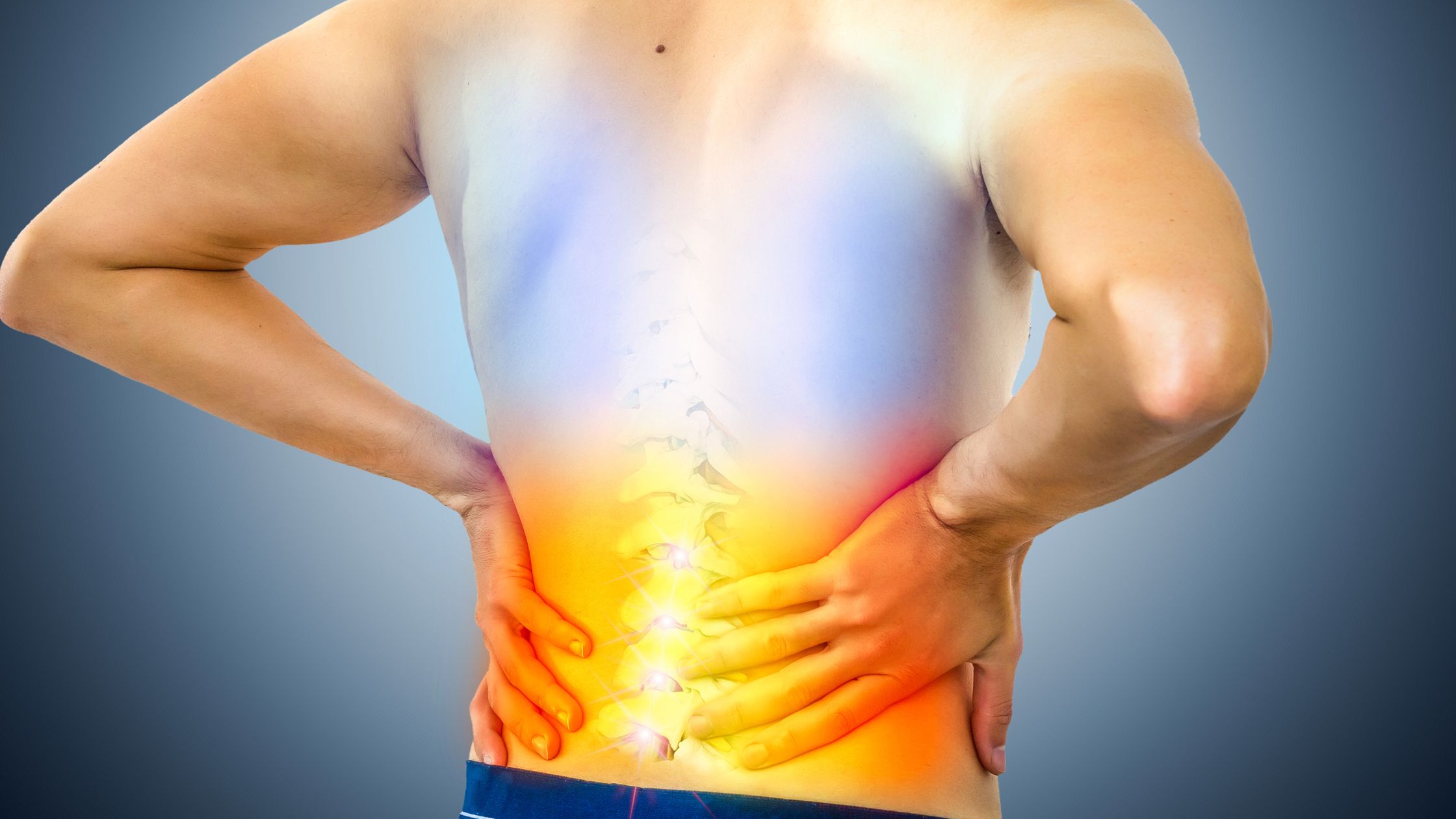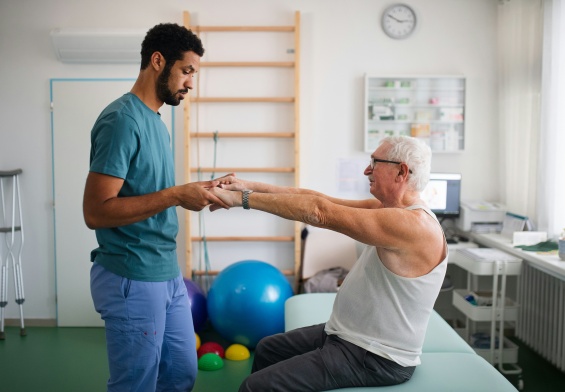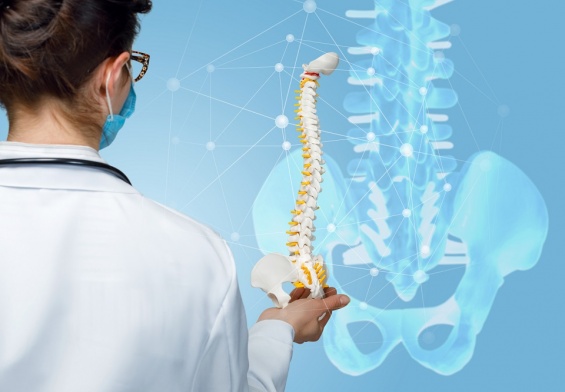Lower left back pain drags your day down into the depths of despair. To climb back out from that pit, people visit doctors, urgent care centers, and emergency rooms in New Jersey. Muscle strain or posture cause most cases. But. some symptoms can point to serious medical conditions that need immediate attention. Knowing when to go to the ER versus when to see a spine specialist can make all the difference in your recovery and long-term health.
Quick Answer: When to Go to the ER for Lower Left Back Pain
Go to the ER for lower left back pain if it’s sudden, severe, or prevents you from moving. Seek emergency care if you have fever, numbness, leg weakness, or bladder or bowel control problems. These may signal infection, nerve compression, or an aneurysm. If your discomfort is mild, gradual, or improves with rest, contact an NJ spine specialist for evaluation and care.
Understanding Lumbar Pain Causes and Left-Sided Back Discomfort
The lower (lumbar) region of your spine supports most of your body’s weight and is prone to strain and nerve irritation. Pain on the lower left side can result from muscle injury, joint inflammation, spinal issues, or even kidney-related conditions. According to the Cleveland Clinic, understanding lumbar pain causes helps patients know when to rest and when to seek medical care.
Common Reasons for Lower Left Back Pain
Most lumbar and left-sided back pain stems from:
- Muscle or ligament strain: From lifting, twisting, or overuse.
- Herniated or bulging discs: These can compress nerves and trigger sciatica symptoms such as leg pain or tingling.
- Degenerative arthritis or spinal stenosis: Age-related narrowing in the spine can cause stiffness and nerve pain.
- Kidney issues: Kidney stone back pain or infection may feel sharp and deep, often on one side.
- Aneurysms or infections: Rare but potentially life-threatening if untreated.
For a broader overview of conditions that can cause discomfort, see Diseases That Cause Back Pain.
Without understanding the patterns of your lumbar pain and accompanying systems, you won’t tell if its just musculoskeletal or something more serious.
| Cause Type | Examples | Typical Symptoms | Urgency |
| Musculoskeletal | Strain, sprain, herniated disc | Achy, positional, improves with rest | Usually non-emergency |
| Neurological | Sciatica, spinal stenosis | Radiating leg pain, tingling, weakness | Specialist evaluation |
| Infectious/Vascular | Kidney infection, aneurysm | Fever, pulsating or flank pain | Emergency care |
When Is Lower Left Back Pain an Emergency?
Most lower left back pain is not urgent. Certain symptoms, however,—known as “red flags”—can indicate serious spinal, neurological, or organ-related problems. Guidelines from the Mayo Clinic, MedlinePlus, and StatPearls highlight many of these issues.
1. Pain After an Accident or Fall
Seek emergency care if your back pain follows a car crash, fall, or sports injury. The Mayo Clinic notes that trauma-related lumbar pain can point to fractures or internal bleeding.
2. Numbness, Tingling, or Weakness in the Legs
If you experience sciatica symptoms like radiating pain, numbness, or tingling down one leg, or if you lose bladder or bowel control, go to the ER. MedlinePlus lists these as classic cauda equina syndrome signs, a neurological emergency that can cause permanent paralysis if untreated.
3. Fever, Chills, or Unexplained Weight Loss
Systemic symptoms such as fever, chills, or fatigue may signal an infection in the spine, like discitis or an epidural abscess. The Cleveland Clinic notes that unexplained weight loss alongside back pain can suggest malignancy or infection.
4. Pain That Radiates to the Abdomen or Side
Pain radiating from the lower back to the abdomen could indicate an abdominal aortic aneurysm, which demands immediate attention. If you experience flank pain, burning urination, or blood in urine, it could be kidney stone back pain or infection, as described by MedlinePlus.
5. Sudden, Severe, or Disabling Pain
Sudden, immobilizing pain that prevents you from moving or walking warrants an ER visit. The Mayo Clinic warns that abrupt, sharp lumbar pain may stem from a herniated disc, spinal fracture, or vascular emergency.
Research Insights on Emergency Lumbar Pain
A StatPearls review found that only 0.7%–7.4% of ER visits for back pain involve serious spinal pathology. Yet, irreversible nerve damage can result from a lack of medical attention. You need a prompt evaluation to determine whether your lower back pain is benign or something more dangerous.
When to Call a Spine Specialist Instead of Going to the ER
If your symptoms don’t include red flags, seeing a spine specialist is often the most efficient next step. These physicians check lumbar pain causes, assess posture and movement, and recommend conservative treatment before considering surgery.
Signs You Don’t Need Emergency Care
According to MedlinePlus, you can usually call your doctor—not the ER—if your back pain developed gradually after a minor strain, you can move normally, and you have no fever or numbness. A spine specialist may order X-rays or an MRI to confirm the cause. Many patients find relief through physical therapy, anti-inflammatory medication, or targeted spinal injections.
How ER Doctors and Spine Specialists Coordinate Care
ER doctors handle immediate, life-threatening issues, while spine specialists manage long-term recovery. Combining those approaches keeps everything continuous for NJ patients with persistent lumbar pain.
Follow-up care may involve advanced imaging, nerve studies, or minimally invasive treatments. Patients who first visited the ER for acute lower back pain often transition to a specialist for personalized rehabilitation and preventive strategies.
To understand what happens after diagnosis, read How Providers Treat Pain in the Lower Left Side of the Back.
Common Myths About Going to the ER for Back Pain
Many people assume all severe back pain requires an emergency visit. In reality, the majority of lumbar pain causes are not life-threatening and respond well to conservative care.
Myth #1: All Severe Back Pain Is an Emergency
Intense pain by itself isn’t indicative of a true emergency. A muscle strain can be extremely painful. Yet, they’re safe to manage at home with rest and medication. If your pain improves within a few days, a same-week specialist visit is usually enough.
Myth #2: You Always Need an MRI for Back Pain
Early imaging isn’t recommended unless serious red flags are present. StatPearls and MedlinePlus emphasize that unnecessary MRIs can lead to overtreatment. Most spine specialists focus first on functional exams and symptom history.
Myth #3: The ER Can Cure Chronic Back Pain
The purpose of an ER visit is stabilization, not long-term management. Chronic or recurring pain in the lower left region—often linked to posture, degenerative disc disease, or sciatica—benefits more from ongoing spine care.
How to Relieve Lower Left Back Pain at Home
If your symptoms don’t include emergency indicators, simple home strategies can help. The Mayo Clinic and MedlinePlus recommend:
- Stay active after brief rest. Gentle movement prevents stiffness and speeds recovery.
- Use heat or ice therapy. Apply ice during the first 48 hours, then heat for muscle relaxation.
- Try over-the-counter medications. Acetaminophen or ibuprofen can ease pain and inflammation.
- Focus on posture and ergonomics. Keep your spine aligned when sitting, standing, or lifting.
- Incorporate low-impact exercise. Walking or swimming helps strengthen the core and support the lumbar spine.
If your work habits contribute to your discomfort, check out How to Prevent Back Pain from Desk Work: Tips for Remote Workers.
If discomfort persists for more than two weeks, schedule an evaluation. Persistent pain or sciatica symptoms may need advanced testing or targeted therapy.
If your symptoms persist beyond a week, explore Common Treatments for Back Pain to learn what options spine doctors may recommend.
Key Takeaways for Patients
- Go to the ER immediately if pain follows trauma, includes fever, numbness, or bladder/bowel changes.
- See a spine specialist if symptoms last longer than a week but don’t involve emergencies.
- Red flags like cauda equina syndrome signs need urgent evaluation.
- Most lumbar pain causes improve with conservative treatment.
- NJ spine specialists provide comprehensive care for patients across North and Central Jersey.
When to Seek Expert Help for Lower Left Back Pain
Lower left back pain is one of the most common and treatable musculoskeletal complaints. While most cases improve with rest, ignoring red flags can lead to permanent nerve or organ damage. Knowing when to visit the ER versus when to call a spine specialist helps ensure proper care and faster recovery.
If you live in New Jersey and aren’t sure whether your pain in the lower left side of the back requires emergency attention, reach out to a qualified spine doctor. Learn more about when Pain in the Lower Left Side of Back Needs a Spine Doctor in NJ.




